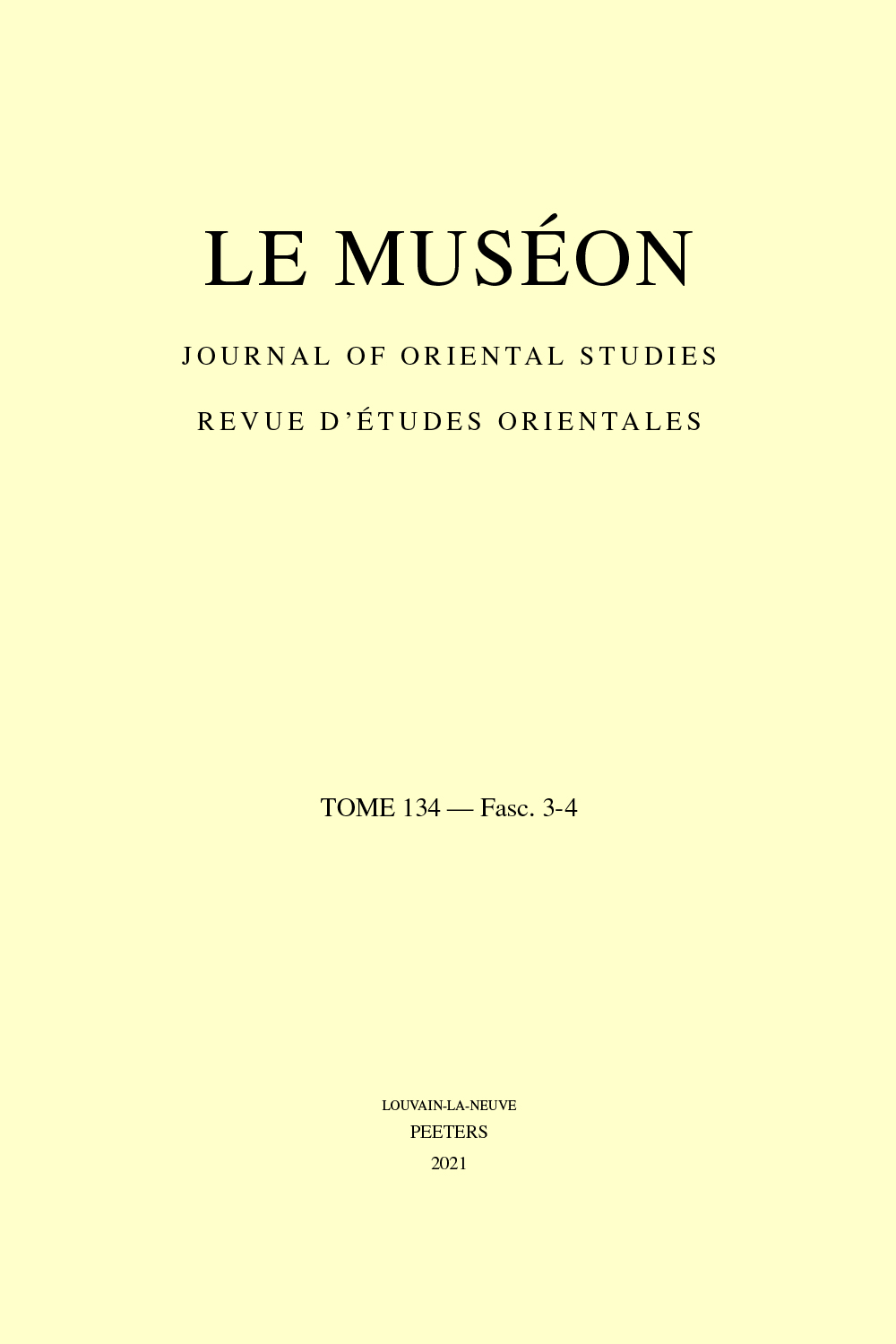 previous article in this issue previous article in this issue | next article in this issue  |

Preview first page |
Document Details : Title: Near Eastern Lunar Calendars in the Syriac Martyr Acts Author(s): STERN, Sacha Journal: Le Muséon Volume: 117 Issue: 3-4 Date: 2004 Pages: 447-472 DOI: 10.2143/MUS.117.3.516933 Abstract : Theories that the lunar dates in the Syriac Martyr Acts follow either the Alexandrian Easter cycle or the Jewish calendar are refuted in this article, both on historical and on calendrical grounds. Instead, it is proposed that these dates follow local civil calendars, which in Persian Mesopotamia (and adjoining regions) were generally lunar. Analysis of these dates reveals, however, that a variety of lunar calendars were used, ranging from the traditional Babylonian calendar to fixed lunar calendars similar to the Alexandrian cycle. This reflects the diversity of civil lunar calendars that should be expected to have prevailed in these regions. Evidence of these calendars in the Syriac Martyr Acts has interesting implications for the social history of the Persian-Roman borderland. This is also the earliest attestation of fixed lunar calendars in the Near East, together with contemporary evidence regarding the Jewish calendar. Fixed lunar calendars may have been introduced in the Near East under the influence of the Christian Easter cycles. If so, these lunar dates, like the Julian (Western Syriac) dates that also appear in the Syriac Martyr Acts, may be evidence of Christianisation in the Near East. |
|


